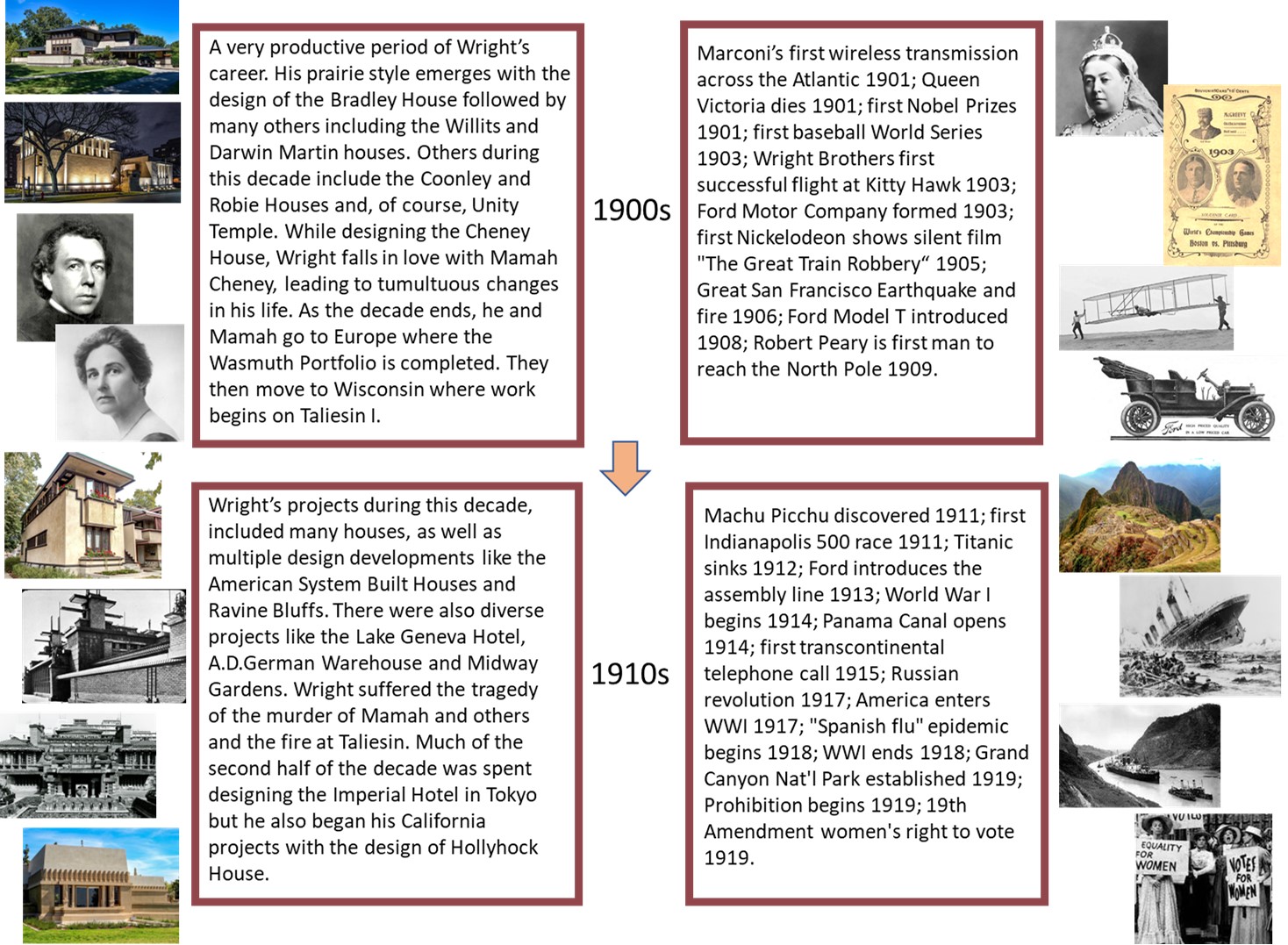When Unity Temple was constructed, it was surrounded by houses with the exception of the First Congregational Church and Scoville Institute across the street. Oak Park was experiencing rapid growth during the time Unity Temple was being built, so a new post office was constructed down the street on the northeast corner of Lake Street and Oak Park Avenue. However, within twenty years as the village continued to grow, a larger post office was needed. Congress allocated $600,000 for a new post office in 1931. The site at Lake Street and Kenilworth Avenue, across the street from Unity Temple, was purchased for $175,000 from the George R. Hemingway brokerage office. George was Ernest Hemingway’s uncle. With the country in the depths of the Great Depression, an additional $70,000 was appropriated under the New Deal in 1935 to complete the project.
 The architectural firm of White and Weber was selected to design the new post office. Charles E. White, Jr., who had practiced architecture in Massachusetts and Vermont for eight years, moved to Chicago in 1903 and went to work in Frank Lloyd Wright’s Oak Park Studio. In 1905, the year that Wright was commissioned to design Unity Temple, White launched his own practice. He continued to collaborate with Wright, including working with him to design the River Forest Tennis Club in 1906. In 1909, his successful office had 15 different commissions listed in the Chicago Architectural Catalog. White was also a prolific writer of articles on architecture and design for Ladies Home Journal and wrote two architectural text books. He was the first chairman of the Oak Park zoning commission. White married Alice May Roberts, the daughter of Charles E. Roberts, who was influential in selecting Wright to design Unity Temple as chairman of the building committee. In 1922, White formed a partnership with Bertram Weber, who had worked in the office of noted Chicago architect Howard Van Doren Shaw.
The architectural firm of White and Weber was selected to design the new post office. Charles E. White, Jr., who had practiced architecture in Massachusetts and Vermont for eight years, moved to Chicago in 1903 and went to work in Frank Lloyd Wright’s Oak Park Studio. In 1905, the year that Wright was commissioned to design Unity Temple, White launched his own practice. He continued to collaborate with Wright, including working with him to design the River Forest Tennis Club in 1906. In 1909, his successful office had 15 different commissions listed in the Chicago Architectural Catalog. White was also a prolific writer of articles on architecture and design for Ladies Home Journal and wrote two architectural text books. He was the first chairman of the Oak Park zoning commission. White married Alice May Roberts, the daughter of Charles E. Roberts, who was influential in selecting Wright to design Unity Temple as chairman of the building committee. In 1922, White formed a partnership with Bertram Weber, who had worked in the office of noted Chicago architect Howard Van Doren Shaw.
 White and Weber choose an Art Deco style for the post office, which was at the peak of its popularity during this period. Art Deco was associated with both luxury and modernity; it combined high quality materials and exquisite craftsmanship put into modernistic forms. The Chrysler Building, Empire State Building and Rockefeller Center in New York City, all built in the early 1930s, are prime examples of Art Deco architecture. The façade of the post office is carved limestone. The design is symmetrical, with stylized columns giving the building of monumental appearance. One of the most recognizable Art Deco features on the exterior are the sculpted bronze figures in the windows above the entrances showing stylized symbols of mail delivery, including a bird with an envelope in its beak, a postman’s bag, a covered wagon, and an airplane.
White and Weber choose an Art Deco style for the post office, which was at the peak of its popularity during this period. Art Deco was associated with both luxury and modernity; it combined high quality materials and exquisite craftsmanship put into modernistic forms. The Chrysler Building, Empire State Building and Rockefeller Center in New York City, all built in the early 1930s, are prime examples of Art Deco architecture. The façade of the post office is carved limestone. The design is symmetrical, with stylized columns giving the building of monumental appearance. One of the most recognizable Art Deco features on the exterior are the sculpted bronze figures in the windows above the entrances showing stylized symbols of mail delivery, including a bird with an envelope in its beak, a postman’s bag, a covered wagon, and an airplane.
The vaulted, three-story high main hall, topped by a lay-light running its entire length, continues the monumental nature of the building on the interior. Four Works Progress Administration murals, two at each end of the main hall, depict the history of the area and highlight the period during which the building was constructed. Other interior details include vertical wall sconces on each column with bands of stars at the top and bottom and a border of stars along the top each wall.
The post office is one of three magnificent buildings at the intersection of Lake Street and Kenilworth Avenues which provide excellent examples of contrasting architectural styles; the Art Deco post office, the Gothic First United Church of Oak Park, and Frank Lloyd Wright’s Unity Temple.
By Ken Simpson





